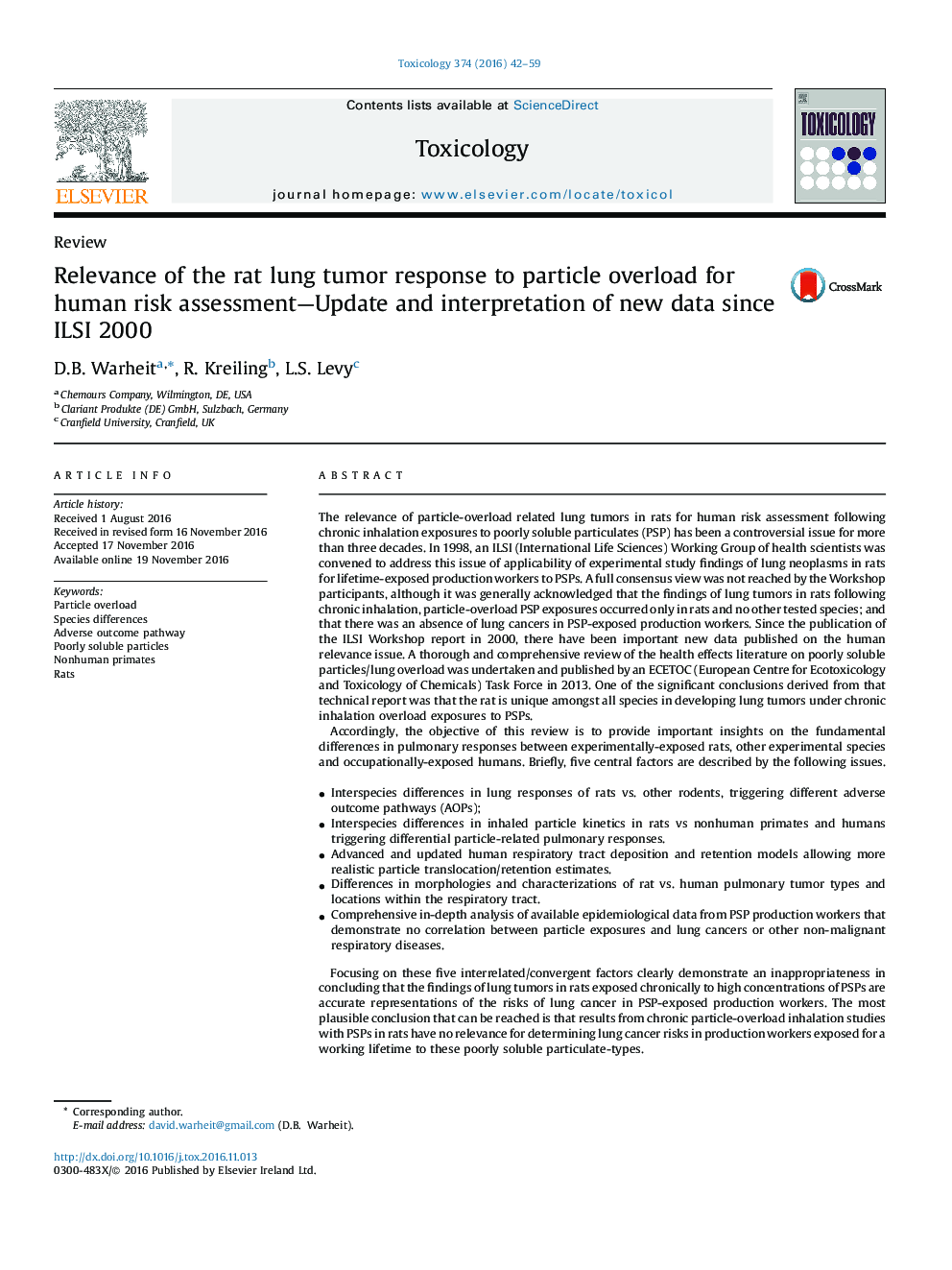| کد مقاله | کد نشریه | سال انتشار | مقاله انگلیسی | نسخه تمام متن |
|---|---|---|---|---|
| 5561877 | 1562298 | 2016 | 18 صفحه PDF | دانلود رایگان |

The relevance of particle-overload related lung tumors in rats for human risk assessment following chronic inhalation exposures to poorly soluble particulates (PSP) has been a controversial issue for more than three decades. In 1998, an ILSI (International Life Sciences) Working Group of health scientists was convened to address this issue of applicability of experimental study findings of lung neoplasms in rats for lifetime-exposed production workers to PSPs. A full consensus view was not reached by the Workshop participants, although it was generally acknowledged that the findings of lung tumors in rats following chronic inhalation, particle-overload PSP exposures occurred only in rats and no other tested species; and that there was an absence of lung cancers in PSP-exposed production workers. Since the publication of the ILSI Workshop report in 2000, there have been important new data published on the human relevance issue. A thorough and comprehensive review of the health effects literature on poorly soluble particles/lung overload was undertaken and published by an ECETOC (European Centre for Ecotoxicology and Toxicology of Chemicals) Task Force in 2013. One of the significant conclusions derived from that technical report was that the rat is unique amongst all species in developing lung tumors under chronic inhalation overload exposures to PSPs.Accordingly, the objective of this review is to provide important insights on the fundamental differences in pulmonary responses between experimentally-exposed rats, other experimental species and occupationally-exposed humans. Briefly, five central factors are described by the following issues.
- Interspecies differences in lung responses of rats vs. other rodents, triggering different adverse outcome pathways (AOPs);
- Interspecies differences in inhaled particle kinetics in rats vs nonhuman primates and humans triggering differential particle-related pulmonary responses.
- Advanced and updated human respiratory tract deposition and retention models allowing more realistic particle translocation/retention estimates.
- Differences in morphologies and characterizations of rat vs. human pulmonary tumor types and locations within the respiratory tract.
- Comprehensive in-depth analysis of available epidemiological data from PSP production workers that demonstrate no correlation between particle exposures and lung cancers or other non-malignant respiratory diseases.Focusing on these five interrelated/convergent factors clearly demonstrate an inappropriateness in concluding that the findings of lung tumors in rats exposed chronically to high concentrations of PSPs are accurate representations of the risks of lung cancer in PSP-exposed production workers. The most plausible conclusion that can be reached is that results from chronic particle-overload inhalation studies with PSPs in rats have no relevance for determining lung cancer risks in production workers exposed for a working lifetime to these poorly soluble particulate-types.
Journal: Toxicology - Volume 374, 30 December 2016, Pages 42-59